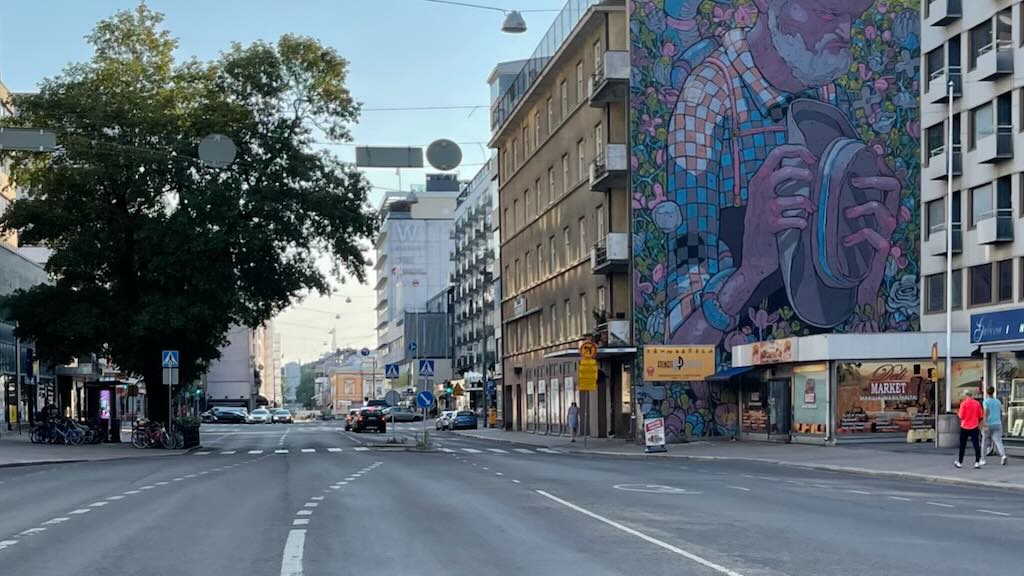Updated 9/2021
(Links marked with one star * are affiliate links)
Anurag Kashyap is a prolific Indian movie director, writer, and producer, who has been making and producing a tremendous amount of quality movies in India. Some of them are really, really, rough to see, like the movies Gangs of Wasseypur I and II, which still lie on my shelf unwatched.
Many other Anurag Kashyap -movies have been reviewed in my blog during the past, like Gulaal, That Girl in Yellow Boots and Dev.D., the latter of which belongs to the category of the Best Bollywood movies of this millennium. Find the reviews in the links!
Black Friday and Bombay Talkies were the less violent type of Anurag’s movies. Black Friday, an artistic type of a movie, and Bombay Talkies, a nice collection of short movies by 4 different Indian movie directors, all of them movies shot in Mumbai.
Recently Anurag Kashyap made another short movie collection with three other directors. The movie was called Lust Stories, and it was made for Netflix only. It did not impress me, but I don’t regret seeing it either.
At this moment, in the Love & Anarchy – Helsinki International Film Festival 2018, runs his movie Mukkabaaz (The Brawler, in English) and his latest movie Manmarziyaan, “Husband material” in English, is running in Indian theatres.
Though most of the movies directed by Anurag Kashyap are not for the sensitive people, you can try some for yourself and find the movies to watch in the links below.
Movies directed by Anurag Kashyap
1. Black Friday (2004)
“Black Friday” is a hard-hitting, docudrama-style film based on the 1993 Mumbai bombings. It offers a gripping, realistic portrayal of the events leading up to the attacks, the investigation, and the aftermath, delving into the lives of the perpetrators, victims, and law enforcement.
2. No Smoking (2007)
“No Smoking” is a surreal psychological thriller film which follows K, a chain-smoker, as he joins a mysterious rehabilitation program to quit smoking. Faced with Kafkaesque scenarios and extreme consequences, K’s journey becomes a metaphor for addiction, control, and the battle for individual freedom.
3. Dev.D (2009)
“Dev.D” is a modern, edgy adaptation of the classic Bengali novel “Devdas.” The film reimagines the tragic love story, focusing on themes of addiction, self-destruction, and redemption, with its protagonist Dev spiraling into alcoholism and debauchery after losing his childhood love, Paro.
4. Gulaal (2009)
“Gulaal” is a politically charged drama set in Rajasthan, India. The film revolves around a law student who gets entangled in the murky world of student politics, power struggles, and secessionist movements, showcasing brutal betrayals, complex characters, and a critique of India’s political landscape.
5. *That Girl in Yellow Boots – Anurag Kashyap (2010)
“That Girl in Yellow Boots” is an Indian thriller, exploring the dark underbelly of Mumbai. The film follows a British woman searching for her long-lost father, as she navigates the city’s seedy world, working in a massage parlor and encountering various unsavory characters.
6. *Gangs of Wasseypur – Anurag Kashyap Part 1 (2012)
“Gangs of Wasseypur – Part 1” is a gritty crime drama set in the coal mafia-dominated town of Wasseypur. The film chronicles the multi-generational feud between two rival families. It offers a raw portrayal of power struggles, vengeance, and betrayal amidst the backdrop of India’s socio-political landscape.
7. *Gangs of Wasseypur II – Anurag Kashyap Part 2 (2012)
“Gangs of Wasseypur – Part 2” continues the epic crime saga from Part 1. The film follows the next generation of the warring families in Wasseypur.
8. *Bombay Talkies – Zoya Akhtar, Dibakar Banerjee, Karan Johar & Anurag Kashyap (2013) – One of the four segments
“Bombay Talkies” is an anthology film celebrating 100 years of Indian cinema, featuring four short films by renowned directors, including Anurag Kashyap. Kashyap’s segment, “Murabba,” tells the story of a man on a mission to fulfill his ailing father’s wish, exploring themes of fandom, hope, and the impact of cinema on society.
9. Ugly (2013)
“Ugly” is a dark psychological thriller film which follows the chaotic search for a kidnapped girl, exposing the ugly side of human nature as her estranged parents and a corrupt police force navigate deceit, manipulation, and blame, ultimately revealing the characters’ twisted motives and relationships.
10. Bombay Velvet (2015)
“Bombay Velvet” is a period crime drama set in 1960s Mumbai. The film tells the story of a street fighter turned club owner, as he navigates a world of ambition, crime, and love, while getting entangled in a conspiracy involving the city’s elite and powerful.
11. Raman Raghav 2.0 (2016)
“Raman Raghav 2.0” is a psychological thriller, inspired by the real-life serial killer Raman Raghav. The film follows a deranged killer, Ramanna, as he terrorizes Mumbai, and a drug-addicted, morally compromised cop who becomes obsessed with the case, blurring the line between good and evil.
12. Mukkabaaz (2017)
“Mukkabaaz” is a sports drama centered on an aspiring boxer, who faces numerous challenges due to caste-based discrimination and a corrupt boxing federation. The film weaves together themes of love, sportsmanship, and the protagonist’s struggle against a powerful, oppressive system in his quest for success.
13. Lust Stories (2018) – One of the four segments
“Lust Stories” is an anthology film featuring four short stories by prominent Indian directors, including Anurag Kashyap. Kashyap’s segment revolves around a college professor and her student’s infatuation with her. The film explores themes of love, lust, and desire, delving into complex emotions and modern relationships in contemporary India.
14. Manmarziyaan (2018)
“Manmarziyaan” is a romantic drama that explores the complexities of love, commitment, and fidelity. Set in Amritsar, the film follows a free-spirited woman caught in a love triangle between her passionate but unreliable boyfriend and a responsible, mature suitor.
15. Ghost Stories (2020) – One of the four segments
“Ghost Stories” is an anthology horror film featuring four spine-chilling stories by acclaimed Indian directors, including Anurag Kashyap. Kashyap’s segment is a psychological horror tale about a pregnant woman haunted by her dead sister’s spirit, weaving together themes of grief, guilt, and the supernatural in a haunting narrative.
Anurag Kashyap’s directorial style
Anurag Kashyap is an influential Indian film director, screenwriter, and producer, known for his contributions to the Hindi film industry. Born in 1972, in Gorakhpur, Uttar Pradesh, India, he has established himself as a significant figure in Indian cinema, particularly in independent and parallel cinema.
As a director, Kashyap is recognized for his distinct storytelling style and innovative approach to filmmaking. His films often tackle dark and unconventional themes, diving deep into the complexities of human nature, relationships, and society. He has a penchant for portraying gritty realities and is unafraid to explore controversial subjects.
Some of the key aspects of Anurag Kashyap’s directorial style include:
- Realism: Kashyap’s films often showcase raw, unfiltered realities, providing an honest portrayal of characters and the world they inhabit. His movies capture the essence of human emotions and situations in a relatable way.
- Experimentation: He is known for experimenting with narrative structures and storytelling techniques, often breaking the mold of traditional Bollywood cinema. His films, like “Dev.D,” are examples of his unique approach to classic stories.
- Dark themes and characters: Kashyap’s films frequently delve into the darker aspects of human nature, exploring themes such as crime, violence, addiction, and corruption. His characters are often complex and morally ambiguous, making his films thought-provoking and engaging.
- Social commentary: Many of his films provide critical commentary on social and political issues in India, such as the caste system, corruption, and the struggle for power.
- Authenticity: Anurag Kashyap’s films often feature authentic locations, dialogues, and characters, giving viewers a genuine representation of the world his characters inhabit. He has been known to work with non-professional actors and shoot in real-life locations to achieve this authenticity.
- Strong visual style: Kashyap’s films are often characterized by a distinct visual style, employing unique color palettes, camera angles, and cinematography that sets them apart from mainstream Bollywood films.
Read more about Bollywood and Hindi cinema from my guide INDIVUE – Trip to Bollywood!






Leave a comment